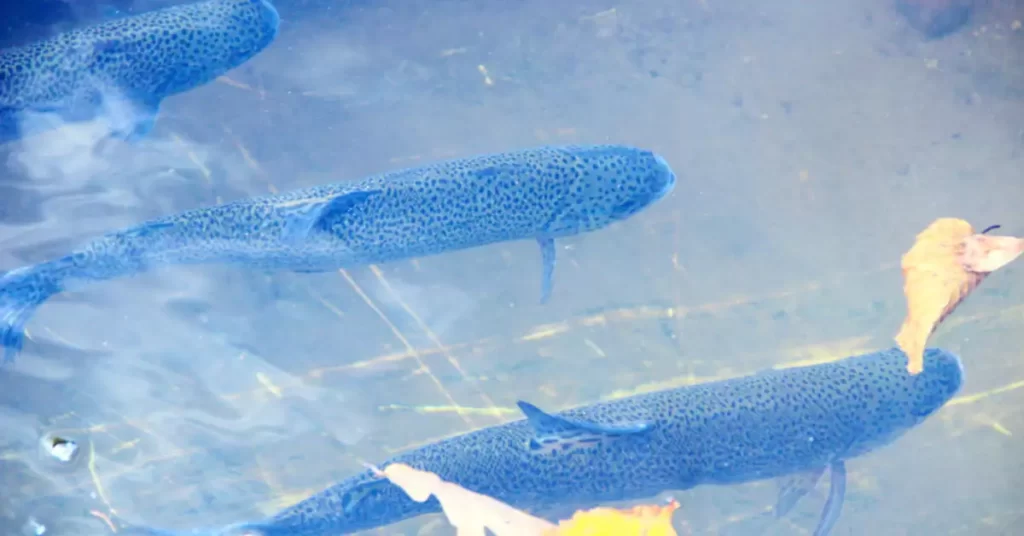Fish, being some of the most diverse and fascinating creatures on Earth, possess a remarkable ability to adapt and heal from various injuries.
One of their most astounding traits is their capacity to regenerate lost or damaged fins. In this article, we will delve into the fascinating world of fish anatomy, explore the process of fin regeneration, and discuss the factors that influence this remarkable ability.
By understanding the intricacies of fish biology, we can better care for and protect these creatures in their natural habitats and in our aquariums.
An Overview of Fish Anatomy
Fins and Their Functions
Fish have several types of fins, each with unique functions, including the dorsal, anal, pectoral, pelvic, and caudal fins.
These fins help fish maintain balance, steer, swim, and stabilize themselves while in the water.
The loss or damage of these fins can significantly impact a fish’s ability to survive and thrive in its environment.
The Process of Fin Regeneration
Stages of Fin Regrowth
Fish have the incredible ability to regrow their fins through a process known as fin regeneration. This process occurs in four main stages:
- Wound healing – The injured area begins to heal and close up.
- Dedifferentiation – Cells near the wound lose their specialized function and become more generic.
- Blastema formation – The dedifferentiated cells multiply, forming a mass of undifferentiated cells called a blastema.
- Redifferentiation and outgrowth – Cells in the blastema differentiate and grow into new fin tissue.
Factors Affecting Regeneration
Several factors can influence the rate and success of fin regeneration, including the fish’s age, overall health, water quality, and stress levels.
For example, younger fish typically have a higher rate of regeneration, while fish in poor health or under stress may struggle to regrow fins.
Fish Species That Can Regrow Fins
Most fish species have the ability to regenerate their fins to some extent. Some examples of fish that are known for their regenerative capabilities include zebrafish, goldfish, and bettas.
However, the extent to which a fish can regrow its fins varies depending on the species and individual circumstances.

The Role of Genetics in Fin Regeneration
Genetics plays a significant role in the regenerative abilities of fish. Certain genes are responsible for the activation and regulation of the regrowth process.
By studying the genetics of fish with exceptional regenerative capabilities, scientists can gain insights into potential applications for regenerative medicine in humans.
How Fish Heal and Recover from Injury
In addition to fin regeneration, fish have other mechanisms to heal from injury. For instance, they produce a slime coating that protects their body from infections, parasites, and physical damage.
Fish also have an immune system that helps ward off infections, and their scales provide a protective layer over their skin.
The Impact of Environmental Factors on Fin Regrowth
Environmental factors, such as water quality and temperature, play a crucial role in the success of fin regeneration.
Poor water quality can slow down or even halt the regrowth process. Similarly, extreme water temperatures can stress fish and negatively impact their ability to heal. It’s essential to maintain optimal water conditions to support fin regrowth and overall fish health.
Protecting Fish from Fin Damage
Aquarium Maintenance
To minimize the risk of fin damage and promote healthy regrowth, it’s essential to maintain a clean and safe environment for your fish. This includes:
- Regularly monitoring water parameters, such as pH, ammonia, nitrite, and nitrate levels, and making adjustments as necessary.
- Ensuring appropriate water temperature for your fish species.
- Performing regular water changes and cleaning the tank to remove waste and debris.
- Providing sufficient hiding spots and decorations to reduce stress and territorial disputes among fish.
Proper Nutrition
A balanced diet is crucial for fish health and their ability to recover from injury. Ensure that you’re providing your fish with a diet that meets their specific nutritional requirements, including vitamins, minerals, and proteins.
High-quality commercial fish foods, as well as a variety of live and frozen foods, can help promote optimal health and support fin regeneration.
FAQs
Can all fish species regrow their fins?
While most fish species have some regenerative capabilities, the extent to which they can regrow fins varies depending on the species and individual circumstances.
How long does it take for a fish to regrow its fins?
The time it takes for a fish to regrow its fins depends on the species, the extent of the damage, and various environmental factors.
In some cases, fins can begin to regrow within days, while in other situations, it may take weeks or even months.
What can I do to help my fish regrow its fins?
To support fin regrowth, ensure that your fish is living in a clean and stress-free environment with appropriate water parameters.
Provide a balanced diet, maintain water quality, and monitor your fish’s health closely.
Conclusion
Fish possess the remarkable ability to regenerate their fins, allowing them to recover from injury and adapt to their environment.
Understanding the intricacies of fish biology and the factors that influence fin regeneration can help us better care for these fascinating creatures.
By maintaining a clean, safe, and stress-free environment, providing proper nutrition, and closely monitoring our fish’s health, we can support their ability to heal and thrive in their aquatic homes.